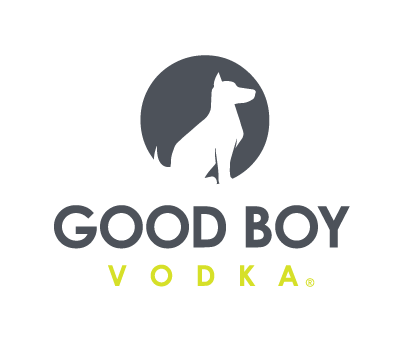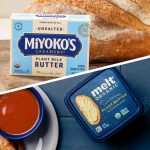Foxtrot Fallout: Brands, Distributors React As Retailer Shuts Down

Outfox Hospitality’s former partners are waking up to a new world this morning after the company pulled the equivalent of a corporate Irish Exit yesterday by immediately shutting all 33 Foxtrot and two Dom’s stores nationwide – to the surprise of many of its customers, not to mention its over 1,000 employees. But after the initial round of sharing memories, condolences, recriminations and memes is over, the question of what comes next is one that can’t afford to go unanswered for very long.
For former Foxtrot brands, particularly those indexing higher sales in the chain, there are some pretty obvious cash flow concerns as invoices remain unpaid. Perhaps most disheartening? Outfox’s secrecy around its declining fortunes meant it continued to place orders with brands up until the last moments, according to a post from Plant People’s CEO.
For some of the brands left holding purchase orders in Foxtrot’s former regions, triage opportunities are already starting to emerge. In a post on LinkedIn, Peter Gialantzis, chief merchandising officer at distributor Pod Foods, extended an offer to pick up the slack by distributing products to stores in three key markets once serviced by Foxtrot.
“This is not charity. This is a golden opportunity to gain market share,” noted the former KeHe SVP. “There is over $500K of sales here next month across your brands combined. Together that is enough for retailers to take action with.”
WeStock CEO Cameron McCarthy echoed the call for ex-Foxtrot brands to act quickly. He advised reaching out to similar store accounts within a 5-10 mile radius, putting together a customer transition plan for new store buyers that integrates Foxtrot sales data, and creating a short-term discount code for online purchases made in those relevant areas. “If you nurtured a consumer base in those areas, you have to act quickly to make them feel supported and position this as an opportunity for a new retailer to gain that business.”
Online CPG community founder Jordan Buckner had simple advice: “Go buy from the small emerging brands you love. Your purchase can make the difference between them growing or going out of business.”
Jason Burke, founder of better-for-you snack and condiment maker The New Primal, painted Foxtrot’s ending as indicative of the current challenges of brick-and-mortar retail. In that climate, Amazon has been “a beacon of hope,” he noted, by offering “a level playing field for emerging brands.”
Stepping further back, Foxtrot’s collapse puts its fundamental retail concept back into question. As players like Target, Gopuff, Walmart and others have dedicated more shelf space and attention to new and innovative brands, Foxtrot’s value proposition to both suppliers and consumers likely narrowed. One former retail entrepreneur we spoke with suggested that the high cost of customer acquisition for premium specialty retailers drives prices in-store to untenable heights.While the stores were widely lauded, they were largely in high-rent downtown areas and at least one investor was clear yesterday when they said the company had not found enough cost efficiencies to scale profitably.
Another observer offered a more cynical take, however.
“Foxtrot was a place to sell overpriced or subsidized VC products for data and case study, through a trendy brand for target demos,” wrote small business consultant Josh Akramoff, who went on to question the venture-backed model for food brands. “Spending millions on marketing and slotting, hoping to gain loyalty was never a good strategy. A store dedicated to entry into that model was going to hit challenges.”
Or, as Selva Ventures Managing Partner Kiva Dickinson stated, “Raising too much money before you have nailed your unit economics is a terrifying proposition.”
“When you raise that kind of $ from that kind of investor you are filling your car up with rocket fuel, flooring it and hoping for the best – you really don’t have much of a choice.”
Neil Stern, CEO of Good Food Holdings – which owns natural retail chains Bristol Farms and Lazy Acres – suggested that after the merger of Dom’s and Foxtrot, the company likely wasn’t able to grow fast enough and lacked the amount of stores and revenue necessary to cover corporate overhead costs.
“It’s really unfortunate news, because I think both are great concepts, they just didn’t have the time to get fully formed,” Stern said.
While Stern said he believed that consumers do like the concept of the small box grocery store model and feels there’s still plenty of promise in the model, there are big financial challenges with smaller stores, where many input costs can remain the same but at lower revenue yields. For example, an experienced store director likely draws around the same salary whether they’re hired for a 10,000 square foot store or a 50,000 square foot store.
“There’s things that you can’t leverage as much, so your labor as a percent of sales tends to be a little high,” he added.
The pressure to become profitable also seems to have come to bear: A story on ModernRetail details a roiling identity crisis under the leadership of former CEO Liz Williams, marked by challenges born from a shift away from sourcing from local purveyors to national brands and from direct management of delivery contracts to third-party platforms.
Against these odds, only the biggest of the big may have the stomach to compete. But the winds are blowing away from trying to squeeze margin out of premium-minded small format stores; in contrast, see value grocer Aldi’s plans to add 800 U.S. stores by the end of 2028. Whole Foods’ forthcoming launch of small-format, urban-focused stores will see that theory tested even further.
Amidst the uncertainty, one group isn’t waiting to take action: a lawsuit filed this morning in federal court in Chicago alleges Outfox violated federal and state labor laws by failing to give the required 60 days’ notice ahead of layoffs.















